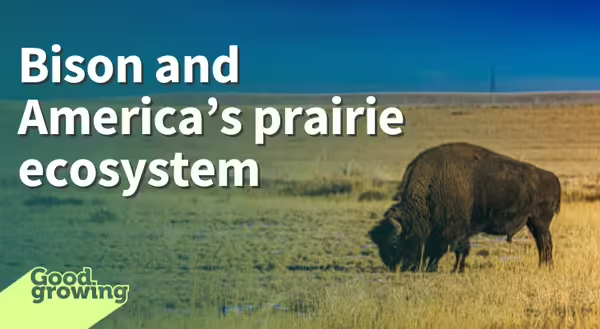
This week marks the official beginning of autumn as far as our calendar is concerned but the natural world began the transition toward fall weeks ago. I recently had the pleasure of sharing a part of this transition with my son when I was able to join him on a prairie seed collection activity with his 4-H group. Hosted by a local prairie preserve, students were given bags and asked to gather the dried seed heads of prairie flowers. The flower seeds would be used in nearby prairies that had become dominated by tall grass species such as yellow Indiangrass (Sorghastrum nutans), big bluestem (Andropogon gerardii) and switchgrass (Panicum virgatum).
While walking through the prairie, I did what I do every time I am in a space reminiscent of a pre-settlement era, I time travel. I imagine the land as it was before paved roads, powerlines, fence rows, and cellphone towers. If visible, I edit those objects out of my view and add in the residents of yesteryear. Sometimes and in some places, I travel to the time of the dinosaurs a few million years ago, other trips are to more recent history. This time I kept it close to the present day.
Land of the Bison
In 2016, the American Bison (Bison bison) was named our national mammal, and the development of our nation is inseparably tied to the species that once roamed this landscape in herds numbering hundreds of thousands. Much has been written about the near extinction and subsequent heroic conservation efforts that have been able to build back the species. As the population has been restored, researchers have begun to paint a picture of how bison herds impacted the plant communities on which they fed.
Studies conducted in Yellowstone National Park reveal that the seemingly random grazing pattern of bison is an incomplete observation. Unlike other large herbivore species (elk, mule deer, etc.) that migrate to follow the first flush of spring vegetation, bison practice a type of plant cultivation. Bison herds graze an area intensely before moving on to another location. Plants respond to this setback by growing new leaves. As nutrient-rich, supple new leaves regrow, the bison herd returns to an area to feed once again. The cycle of grazing and regrowth creates a mosaic pattern of grazed and un-grazed areas on the land.
What bison feed on is as important to consider as how they feed. Bison primarily eat grasses and sedges, occasionally feeding on twigs and tree bark, and rarely consuming flowering plants (forbs). This type of grazing helps keep the ecosystem in balance by knocking back grasses and sedge species that have the potential to dominate a prairie. Their grazing patterns create opportunities for some plants to survive while restricting the growth of others creating a greater diversity of species. We know that ecosystems with greater species diversity are more efficient and effective at delivering vital ecosystem services so, in a way, bison were the keepers of ecosystem health.
Back in the modern era, as I stood in the restored prairie, watching young adults disperse to collect seed, my mind’s eye saw the beauty of youth experiencing a landscape deeply connected to our heritage. In a split-screen view, I saw a land so far removed from its origin that it hurt my heart. Bison require such large tracts of land to survive and thrive that it is unrealistic to expect to see bison roaming the relatively small parcels of restored prairie installed by landowners and conservation organizations. For these ecosystems, we are left to imagine what it was when bison were the land managers and do our best to employ management practices that promote ecosystem health and diversity.
Viewing bison
Restoration efforts have provided the opportunity to view bison in areas that accommodate their need for a large range. In Illinois, the Nachusa Grassland is 4,000 acres of land that has been preserved and is home to a herd of approximately 100 bison. In Iowa, the Neal Smith National Wildlife Refuge protects 6,000 acres of land, 800 of which are home to a small herd of bison. These herds are available for public viewing with some restrictions for safety.
If visiting local bison or traveling west to see the larger herds in our national parks, it is important to remember that bison are not domesticated animals. Although it can be argued that bison are adorable, assuming looks reflect temperament can be a dangerous conclusion. Bison can weigh up to 2,000 pounds, stand up to six feet tall, male and female adults have horns, and can run up to 40 miles per hour. When viewing bison, the responsibility is on us to keep our distance and stay safe.
Good Growing Fact of the Week: Baby bison have been given the nickname “red dogs” since their newborn fur is reddish-orange in color. Within a few months, more characteristic features begin to develop such as brown fur, a shoulder hump, and horns.
Sign up for our emails! Want to get notified when new Good Growing posts are available? SIGN ME UP
MEET THE AUTHOR
Emily Swihart is a Horticulture Educator with the University of Illinois Extension, serving Henry, Mercer, Rock Island, and Stark counties since 2021. Emily provides horticulture programming with an emphasis on trees, native vegetation, and home landscape design.